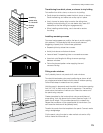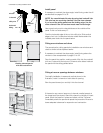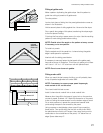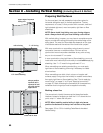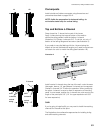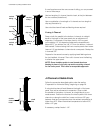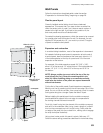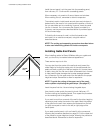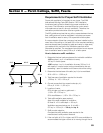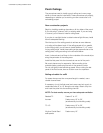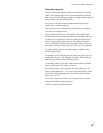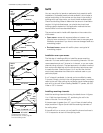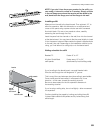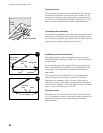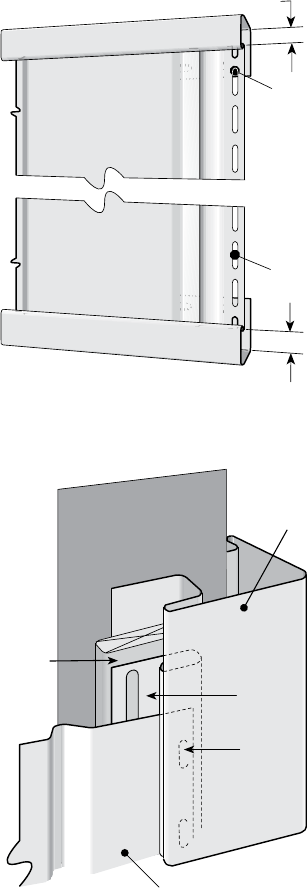
CertainTeed Vinyl Siding Installation Guide
83
Wall Panels
Follow the instructions described earlier under the section
“Preparation for Horizontal Siding” beginning on page 28.
Plan the panel layout
Correctly installed vertical siding should have a balanced
appearance. This means that if you were to draw a vertical line
down the center point of a wall, you’d have an equal number of
panels to the right and left. If you had to trim panels to fit, the
end-most panels would be of identical width.
To create this pleasing appearance, divide the space to be covered
by a partial panel over both ends of a wall. For example, if a wall
required 25 full panels plus 10", you would rip cut two 5" lengths
of panel to create the end pieces.
Expansion and contraction
In a vertical siding installation, most of the expansion is downward.
So instead of allowing equal space for expansion at both ends of
a vertical panel, leave more space at the lower end: allow for 1/3
of the total expansion at the top of a panel and 2/3 of the total
expansion at the bottom.
For example, if the total expansion equals 3/4" (3/8" + 3/8"),
allow 1/4" at the top and 1/2" at the bottom. If the total expansion
equals 1/2" (1/4" + 1/4"), allow 3/16" at the top and 5/16" at
the bottom.
NOTE: Always position top most nail at the top of the top
most full nail slot (1a). Center the remaining nails in the
slots (1b). When installing siding or accessories vertically,
make sure the bottom of the panel can expand downward
without interference.
Cut the first of the partial panels (if partial panels are necessary).
Mark the cut line by measuring from the nail hem edge. Rip cut the
panel. Do not cut off the nail hem. Use a snap lock punch to create
locking tabs along the cut edge. Space the tabs 6" apart.
Before installing this partial panel into the outside cornerpost,
provide additional support at the cut edge to compensate for
the locking channel that was trimmed off.
To do this, insert furring into the channel of the outside cornerpost
and nail it to the substrate. After furring, insert a length of undersill
trim into the cornerpost and nail it to the furring. Finally, slide the
cut edge of the panel into the undersill trim, making sure to engage
the snap locks (see illustration).
Using a level, make certain this panel is plumb. Nail every 12".
Follow the same nailing procedures described for horizontal siding.
Allow for 1/3 of
expansion
1A
1B
cornerpost
undersill
trim
snap
locks
panel
furring
Allow for 2/3 of
expansion



